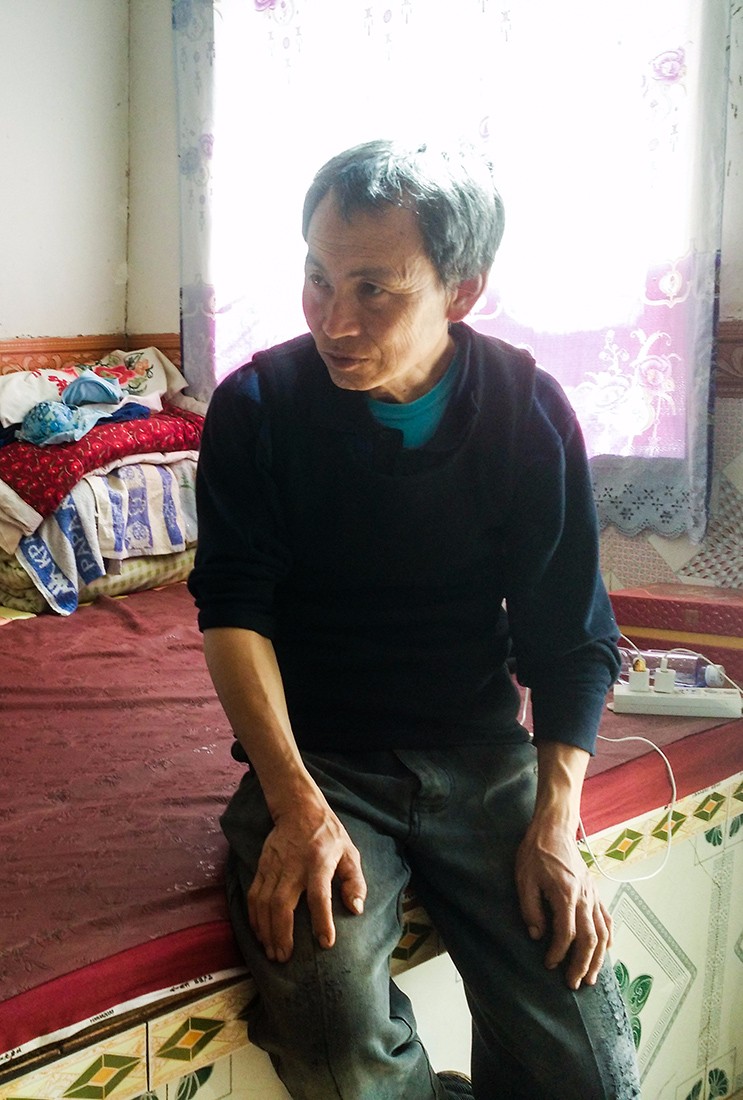For this month’s cover story we’ve brought together a short collection of travel writing. In Part II of this five-part series, That's Beijing's staff reporter Dominique Wong gets off the beaten path in a Gansu Cave House.
Instead of sheep, I count tollgates: Beijing, Hebei, Shaanxi, Shanxi. My friend Wang is driving while I am half-asleep in the passenger seat. We’ve been on the road for almost 12 hours. Our destination? Wang’s family home – a house cave in Gansu.
On Google Earth, the Loess Plateau is a motley collection of swirls separated by curving roads. But on the ground, different shapes take form. Looking out of the car window I see hills carved into steppes and covered in trees (they’ll turn arid brown in winter, Wang assures me).
Few houses dot the landscape here. Instead, round entrances cut deep into the hill face; burrows not unlike giant rabbit holes.

Above and below: Cave house entrances carved out of the hillside
“Those are old yaodong,” Wang says, pointing towards a couple of crumbling round-shaped entrances in the distance.
A yaodong is essentially a house cave made from earth. They are usually carved out of a hillside or excavated horizontally from a central ‘sunken courtyard.’ The literal translation is ‘kiln cave,’ due to the buildings’ arched interiors.

Their use goes back over two millennia – to the Qin dynasty – but they are still a popular choice for those living on the Loess Plateau today, and tend to be handed down to descendants. Many of Wang’s family’s friends also live in house caves.
Winding roads take us past a village market and more cave dwellings before we arrive at Wang’s, about an hour northwest of Qingyang (a prefecture city in east Gansu). Here we are greeted by an open yard bordered by three hillside yaodong. A fourth, newly built, yaodong and washhouse line another side of the perimeter.

Looking at the yaodong from the yard
The yard looks out towards a beautiful green vista. Wang points to a two-story white building perched high on a mountaintop opposite, a gaping valley in between. “That’s where I went to primary school,” he says. “It would take my sisters and I an hour to get there, up and down the hills.”
Ambling down a steep path above the caves is Wang’s granddad, Yeye. He grins at me toothily. “Are you scared of the mountains?”
Yeye built the Wang family home with help from friends 40 years ago (although he now lives with Wang’s uncle in a newer free-standing yaodong, made with bricks, about a 20-minute walk uphill). Each is approximately 12 meters long, 3 meters wide and 4 meters high. One yaodong is the designated kitchen, while the others are used for living and sleeping purposes.
House caves may be a marker of the past but they remain an architectural wonder, proving economic and efficient. Built from loess soil, the thick earthen walls are an ideal heat insulator, helping the caves keep cool in summer and warm in winter (‘dong nuan xia liang’ in Chinese).
There are no beds – in the conventional sense, at least. Instead, each yaodong has a large kang, a type of heated bed with a chimney and stove underneath. The kang is an essential part of yaodong life. If you are ‘on the kang,’ you are comfortable, whether sleeping, or just laying about. Each differs in size but can typically sleep up to five or more people in a row.

Wang Shushu on the kang
Wang’s father, Shushu, was in middle school when he helped his father build the yaodong. According to Shushu, the best part of living in a yaodong is ‘dong nuan xia liang’ while the worst is the poor natural lighting (it is a cave after all). Before electricity was installed in 1995, the Wangs used oil lamps.
The nearest neighbors are kilometers away, but Shushu doesn’t feel alone. “I’m used to this lifestyle. Neighbors would be troublesome,” he shrugs.
The Wangs spend their days tending to livestock and doing work around the home and farm. They have two dogs (Xiaobai and Laohuang), cats and plenty of chickens, the latter laying a daily supply of eggs with large, buttery centers. There are goats and cows as well.

The view from the top of the yaodong
Meals consist of fresh vegetables, homemade noodles or mantou. Sometimes there is chicken or pork. When the Wangs feel like eating something different, they travel to the village market that we passed on the way up, a half-hour drive away. But this is difficult in winter due to heavy snowfall. Flooding is rare though, despite the lack of drains.
On the second day, Wang, Yeye and I take a tour of the surrounding area en route to Wang’s uncle’s home. We walk through a patch of apricot trees, planted by Yeye years ago, and visit the family’s big vegetable garden.
We also pass by several oil excavation sites (see header image). Gansu is full of black gold. Oil diggers have been around the area since the 1970s but only recently so close to home, Wang says: “We don’t get any money from the oil. The local government just gives us free electricity.”
 Wang Yeye prepares to walk down into the yard
Wang Yeye prepares to walk down into the yard
At one point we stop to count the diggers visible in the distance. There are over a dozen. From afar they look like giant insects and up close emit a dull mechanical hum. We come across used drill sites tainted with remnants of old oil, and when I look down I see skinny white pipes jutting out from the earth.
After we arrive at Wang’s uncle’s home, Yeye promptly retires to the kang for a nap. Wang’s uncle has a friend over, which calls for reminiscing about the past over beer and baijiu.
There is little else to do, so I sit outside in the courtyard. The sun beats down. I eat a slice of watermelon and breathe the fresh mountain air.
Read Part I: I Took a Billion-Dollar Cruise Ship with Fan Bingbing, Part II: I Tried to Cycle Across China on a Flying Pigeon, Part III: I Hitchhiked Along the North Korean Border & Part V: I Was a Post-Disaster Tourist in Sichuan's Earthquake Villages.






















0 User Comments